|
by
kirupa | 27 March 2008
I am not sure why, but
ever since the first
hello, world example made its way into the world
in the 1970's, it seems customary to start an
introductory tutorial by having you create a small
Hello World application. Nostalgic reasons aside, an
application as simple as the one you will create in
this tutorial is
a great way to become familiar with bits and pieces
of the language and tools.
This article discusses how to
create applications using Silverlight 2. If you do not know how to get started, the
Getting Started Page should help you get setup for Silverlight design and development.
In this tutorial, I
will show you how you can use Expression Blend to
create a small Silverlight 2 application that does
nothing more than print Hello World to the screen:
[ what you will have created by
the end of this tutorial ]
The following steps
will explain how to to create something similar to
what you see above:
-
Before you begin,
make sure you have
ready my earlier
Getting Started article and have Expression
Blend 2 SP1 installed.
-
Launch Expression
Blend 2. A Welcome Screen should appear, and
from this screen, click on the New Project
link:
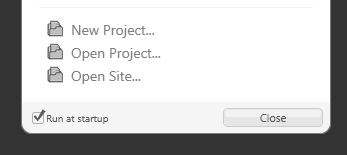
[ from the Welcome Screen, click the New Project
link ]
If you
do not see a Welcome Screen, then go to File | New
Project instead. The end result is the same.
-
After clicking on
New Project, the New Project window
appears. From this window, select the button for Silverlight 2
Application, for Name enter HelloWorld, and
ensure the Language is set to Visual C#:
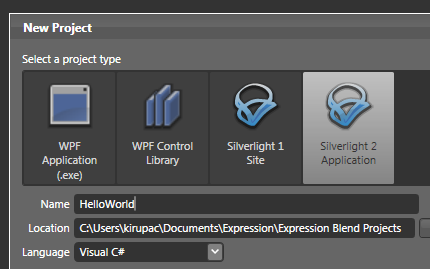
[ you want to create a new Visual C# based
Silverlight 2 Application ]
Click
OK to both close your New Project window as well as
create your new project with the specified values.
-
You should now see
a large area with a big white rectangle-like
shape in the middle
This area overall is known as the Artboard, and
it is here where you will design your
Silverlight application:
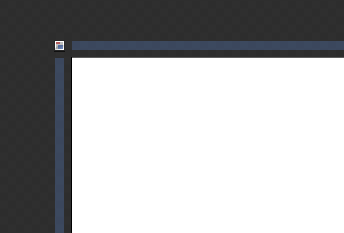
[ meet the Artboard - it is your friend! ]
-
What we want to
do first is add some text to our Artboard. To do
that, you use what is known as a
Control.
Controls are UI elements that provide you custom functionality that you can just use out
of the box.
To display text, you have
some controls that allow you to...display text! In your
Toolbox (the strip of icons on your left), find
the icon that contains a T inside it and click
it:
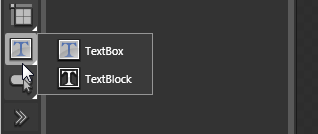
[ click on the Text controls category in your
Toolbox ]
From
the menu that appears, select the TextBlock item.
Once you select your TextBlock item, it will seem
like nothing happened, but don't worry. Something
did happen that isn't immediately evident.
-
Move your mouse
over your design area, and notice that your
mouse cursor currently displays in a shape
resembling a crosshair. When you see something
like that, you know something must
be up:
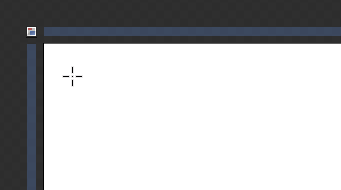
[ your mouse cursor changes into a crosshair-like
shape ]
Position your crosshair towards the top-left of your
design area like you see in the above image and
click-and-drag to draw out your Textblock control:
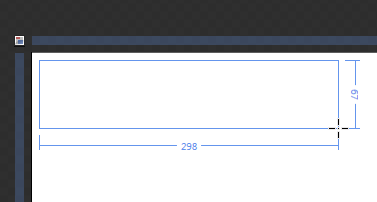
[ you can draw out controls just like you would draw
anything else ]
Make
your textblock large enough and release your mouse
button press to have your textbox actually be drawn.
You should see something similar to what is shown in
the following image:
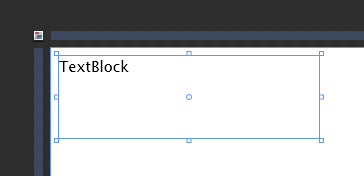
[ your new control has been
created ]
All right! You created a new
project and inserted a textblock control. This seems
like a good point to take a small break. We'll pick
up from here on the
next page!
Onwards to the
next page!
|